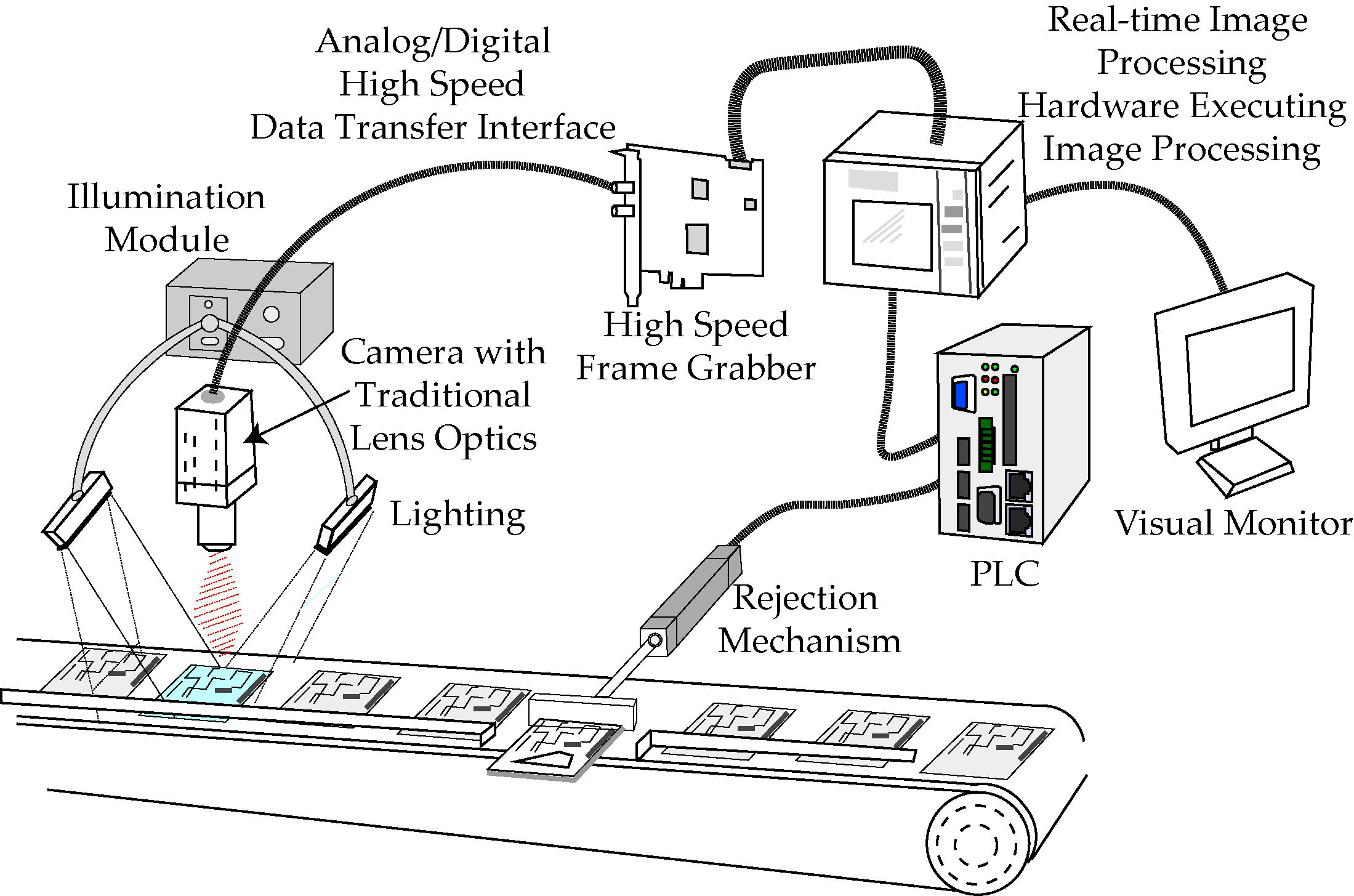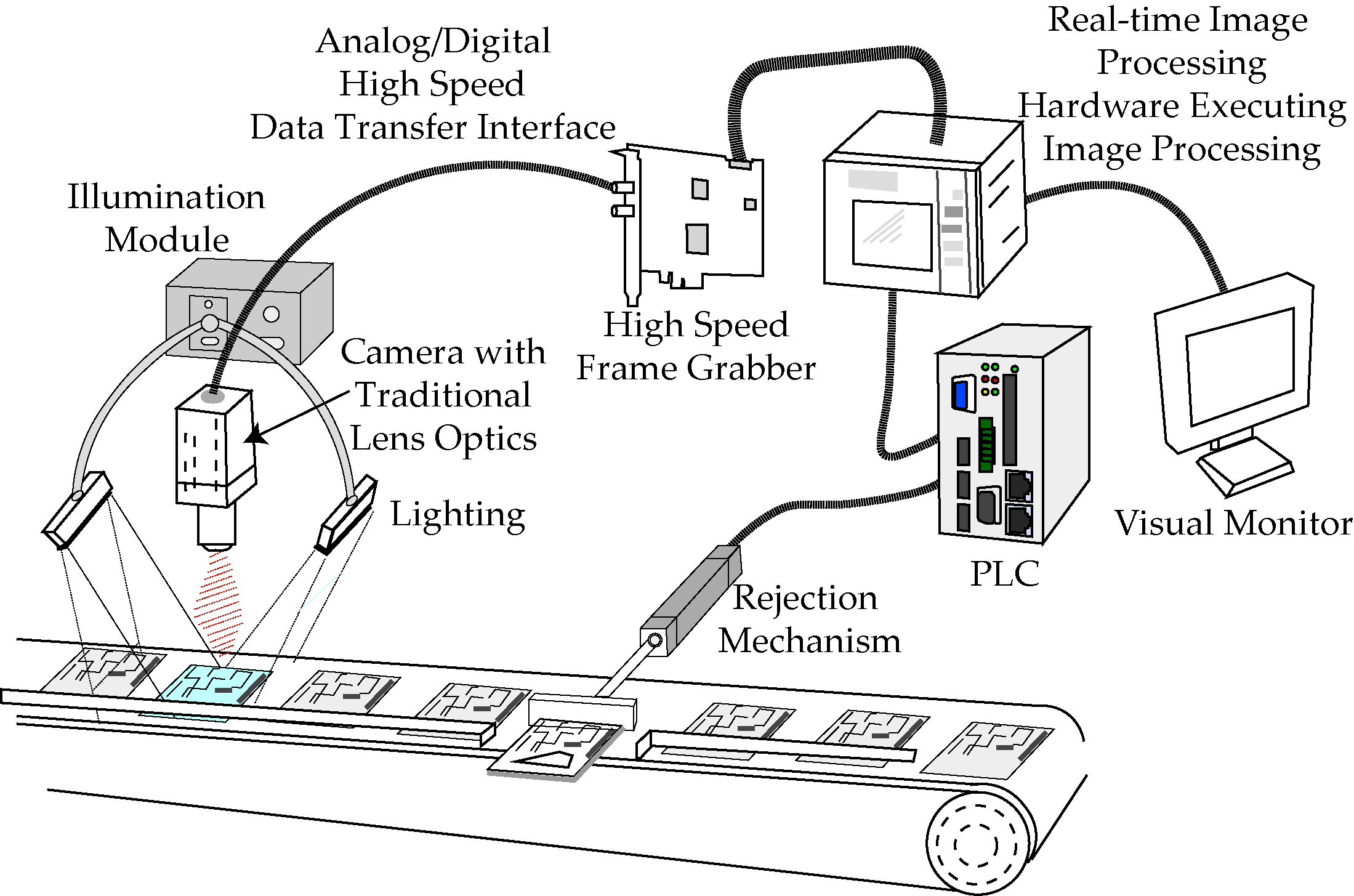In our previous blog post we looked at how Roll-2-Roll® Sensor is more than just a sensor and is similar to a camera based vision system. In this post we will look at how it actually compares to a traditional camera based vision system.
Traditional camera based vision system
Vision systems typically have a dedicated camera, independent light source, frame grabber and a dedicated computer to process the image. These systems are typically used for defect detection. The part to be inspected is illuminated using a lighting module that controls the amount of light falling on the object. The image of the illuminated object is captured by a high speed camera equipped with traditional lens optics. The timing of the capture is typically synchronized with a trigger from a PLC (programmable logic controller), a registration mark signal, or a rotary encoder. The image captured by the camera is sent to a real-time processing system through a high speed data transfer interface with or without a frame grabber. The digitized image is then processed in the real-time hardware (essentially a computer) that runs digital signal processing algorithms for inspection and defect detection. The raw and processed image is also displayed by a monitor which provides the user interface between the real-time hardware and the operator. Based on the application four main types of inspection are carried using the captured image: (1) dimensional quality, (2) surface quality, (3) structural quality and (4) operational quality. A rejection mechanism actuated by the PLC is used to reject the parts that are identified as defective by the machine vision system.

Disadvantages of vision systems
Vision systems are ideal for certain applications with some specific requirements. However, a vision system is not the ideal choice for all inspection applications. The two main drawbacks of the vision systems for simpler inspection applications are: cost and user friendliness.
Cost
The traditional vision systems are ideal for inspecting high value products at high speeds. When the process conditions are fixed these system provide reliable performance with high throughput. However, because of the individual component cost and complexity, these systems are expensive. Additionally, these systems require an "expert" to program; which increase the overall cost of ownership of the system.
Lack of user friendliness
One of the main drawback of these vision systems is their lack of user friendliness. Since an expert is needed to program the vision system, it is often not operator friendly. These system can cause significant downtime in processes with frequent product changeover since they need to be calibrated whenever the operating conditions change. Often a "non-user expert" is needed to make the changes.
How does the Roll-2-Roll® Sensor Compare?
For certain inspection applications, the Roll-2-Roll® Sensor can compete with traditional vision systems. In fact any of the Roll-2-Roll® Sensors with the Controllers can provide complete inspection solution for certain applications including web width measurement, string/thread counting application, multiple strip width measurement application, hole/void or tear detection, flag detection, etc. For these applications the Roll-2-Roll® Sensor has the following advantages.
Low Total Cost of Ownership
Unlike the traditional camera based system, the Roll-2-Roll® sensing system includes two main components: the sensor head and the controller. The light source, optics and the camera are all enclosed in a single package while the processing is done by the controller. Overall this significantly reduces the initial purchase cost of the system by eliminating the need for separate light source, expensive fixturing or gantry build, dedicated capturing system and the processing computer. Without the need for a "vision expert" the overall cost of ownership is also significantly reduced.
Simple to Use
Roll-2-Roll® Controllers are simple to use and operate. There is no programing involved and the system is completely parameterized for ease of use by an operator. Unlike camera based systems, our systems are completely customized for each application. This customization enables ease of use especially with frequent product changeovers.
Conclusion
There are certain applications where a traditional camera based visions systems are the ideal choice. However, for some simpler inspection applications the Roll-2-Roll® Sensors and Controllers are a compelling alternative. If you converting operations requires web width measurement (slitting, blown film, folding, shrink sleeve), mark detection (spray, glue, registration), flag detection (defect flag detection), string or thread counting, multiple strip width measurement, tear detection, etc., Roll-2-Roll® Sensors and Controllers offer an unique value proposition with a quick return on investment. Any company can now afford a low cost inspections system which does not require "vision experts" for implementation and maintenance. Please contact us so that we can help solve your inspection challenges with a compelling alternative to vision systems.

